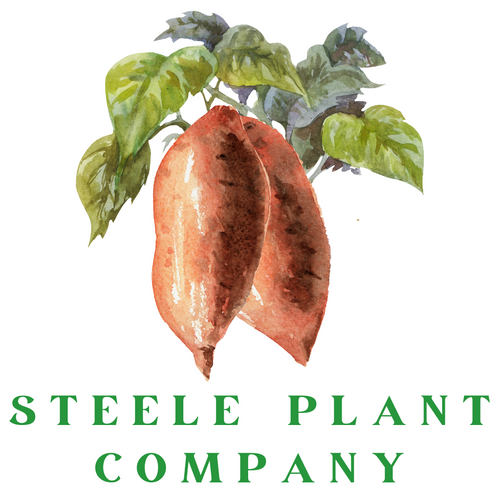Onion Growing Tips
A successful onion crop starts with selecting the right variety or varieties for your area. Please check our Onion Growing Map prior to purchasing onion plants.
Below we explain what to do with your onion plants once you receive them, how to prepare your soil, plant spacing, weeding, when to harvest, and how to store your onions after harvesting.
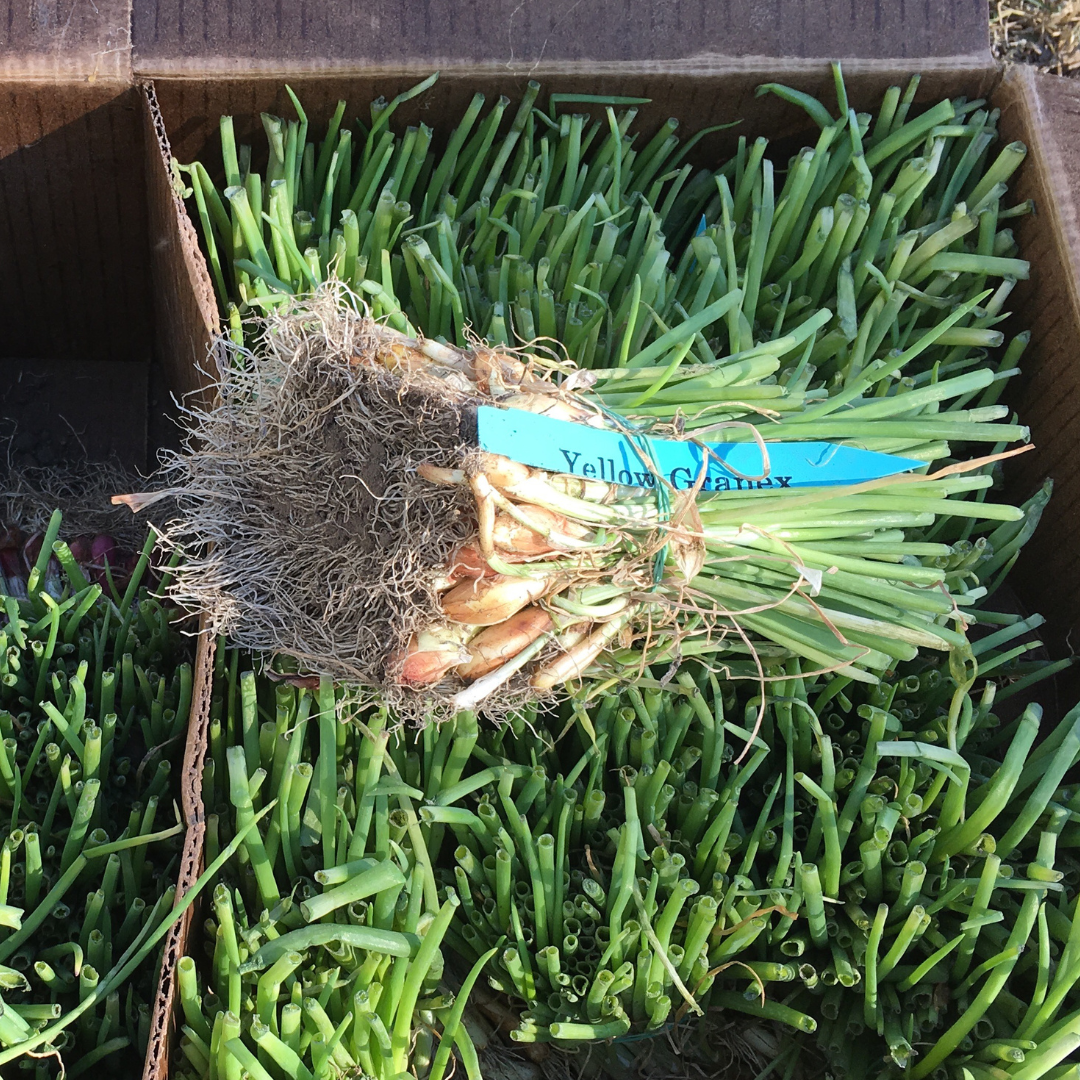
1. Receiving Your Onion Plants
Your onion plants will arrive wrapped in a bundle as shown in the photo. As soon as they are delivered, open the box and unwrap the bundle.
Pull apart the plants and lay them back in the box. Keep the box in a dry, cool area until you're ready to plant.
It's best to plant your onion plants a couple days within receiving them. But if your garden isn't ready or your weather isn't cooperating, the plants should be fine for 1-2 weeks. Keeping them dry until planting is key.
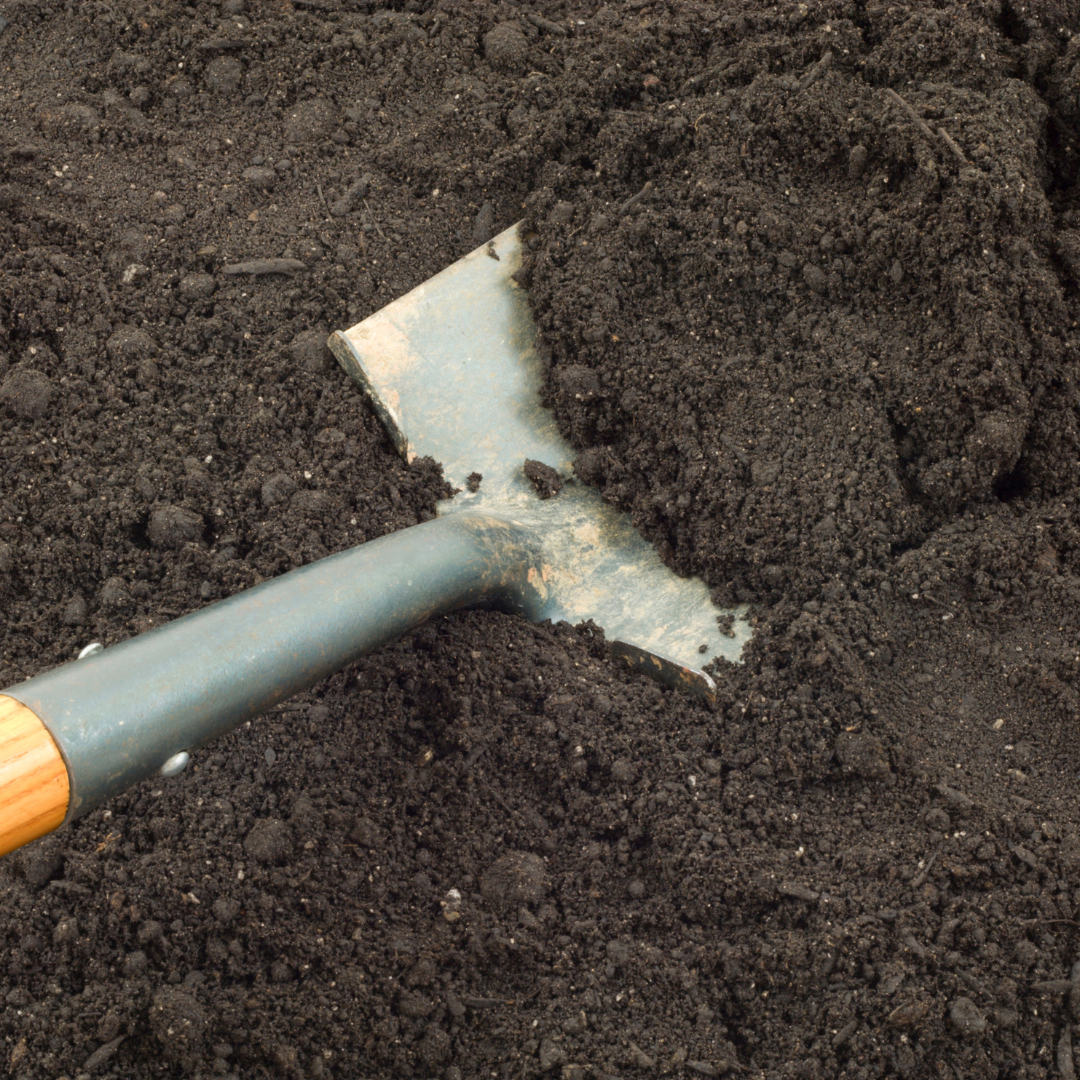
2. Preparing Your Soil for Planting
Onions will grow best in loose, well-drained soil. This type of soil allows the onions to properly enlarge during the bulbing phase of growth.
If your soil is hard and easily crusts after a heavy rain, you'll want to amend and soften your soil with compost or other organic matter. You can also grow onions in containers or raised beds if your in-ground soil is too hard.
Onions prefer a soil pH between 6.0 and 7.0. We recommend testing your soil prior to planting so you can make the necessary adjustments to get your soil pH within this range.
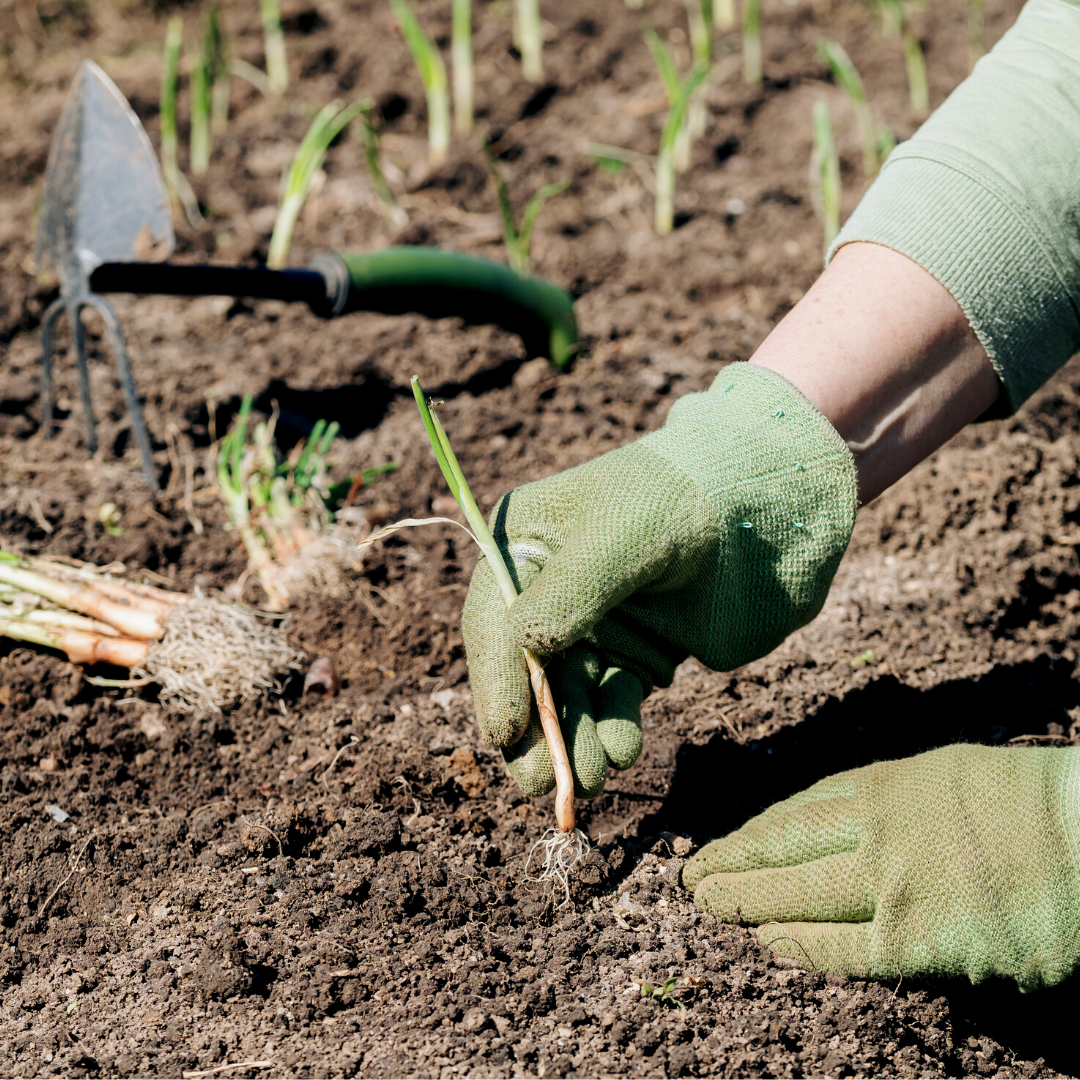
3. Planting Your Onion Plants
Onions can be planted in late winter or early spring. Established onion plants can tolerate temperatures down to 20°F, but young plants will not be as cold-hardy. We recommend planting your onions when nighttime temperatures are consistently above 25°F.
Plant late in the afternoon if possible. Planting in the middle of the day or during high winds can stress the plants. A cloudy afternoon with minimal wind is best.
Push your onion plants a few inches deep into the soil and firm the soil around the plants. Deep planting is not necessary with onions. Our recommended onion plant spacing is 8-10" along the row. Row spacing will vary depending on your desired planting density, but be sure to leave enough room between the rows for easy weeding.
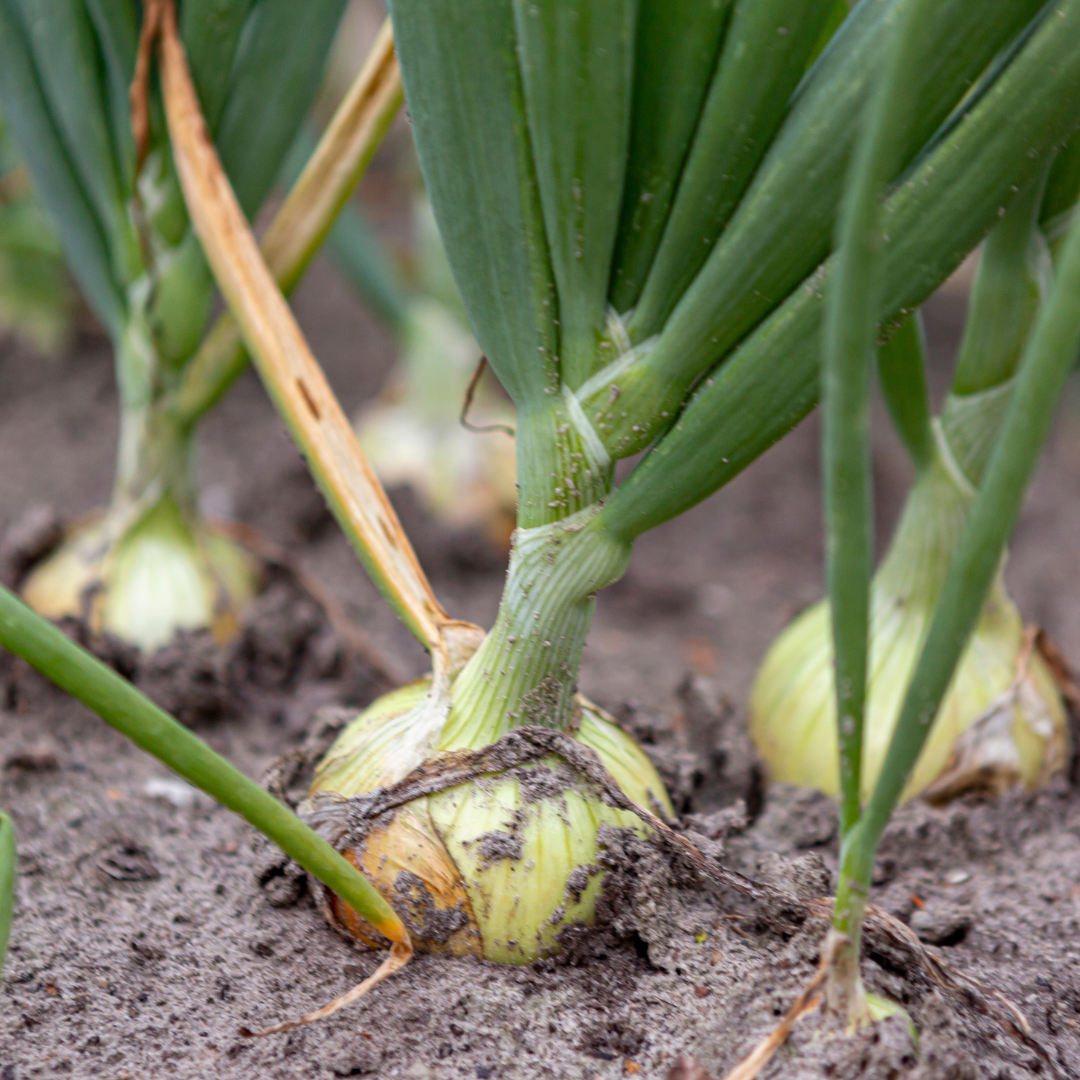
4. Cultivation and Weeding
Weed management is important with all crops in the backyard garden, but it is especially important with onions. Onions are heavy feeders and demand a considerable amount of nutrients to make a big bulb. Weeds will rob those soil nutrients and your onions will suffer as a result.
As onion plants grow, weeding around them can become more difficult. Weed your onion rows early and often so that weed pressure is minimal as the onions approach maturity.
Mulching is a great option for weed suppression in container or raised bed gardens. Use a mulch that doesn't hold a significant amount of moisture. Too much moisture around the onion bulbs can cause them to rot.
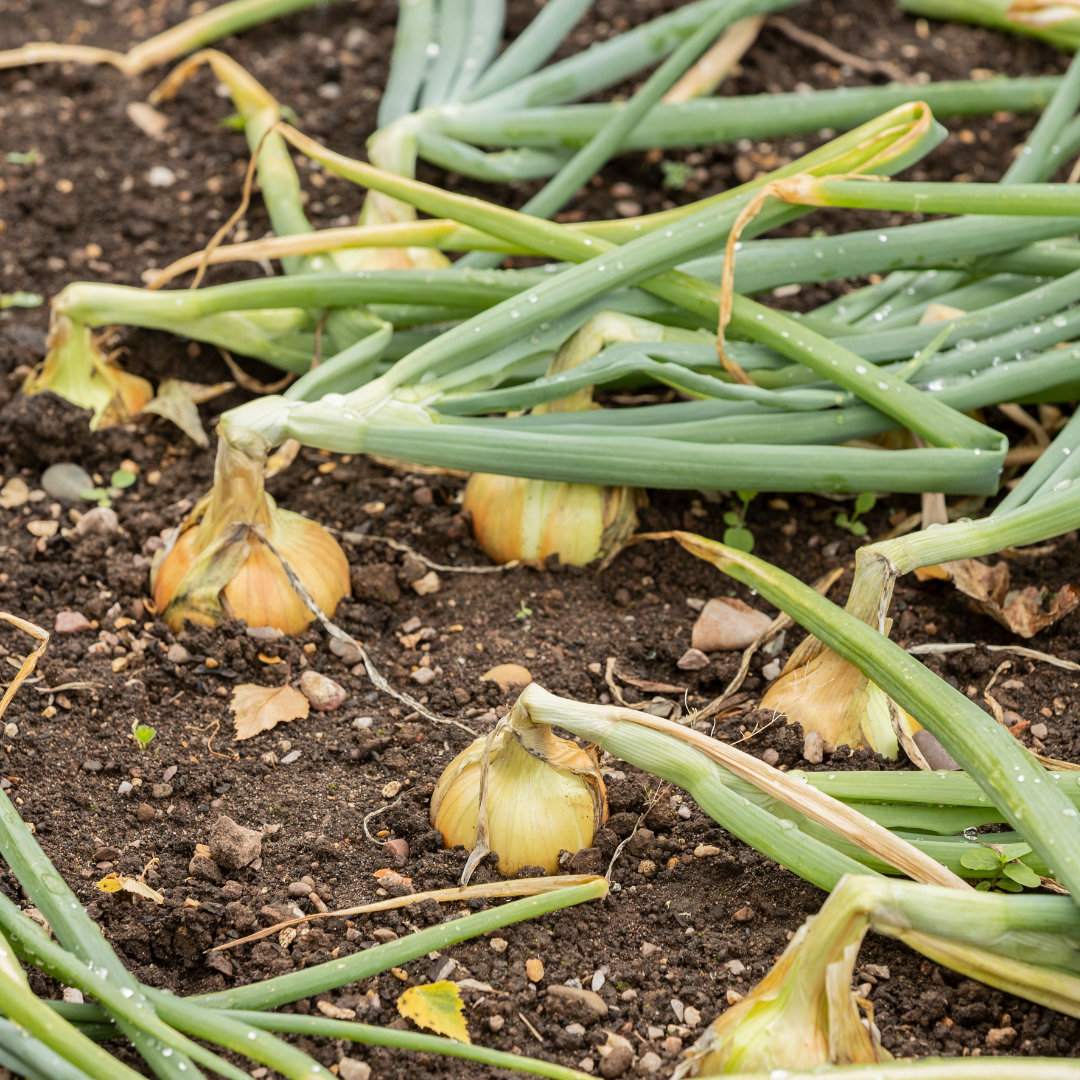
5. When to Harvest Onions
When onions have reached their full maturity, the stem above the bulb will become soft and the tops of the onions will fall onto the soil. At this point the plant is no longer devoting energy into the bulb and should be pulled.
Sometimes onion plants will "bolt" or produce flower heads before the neck softens or the tops fall. This can happen when outside temperatures fluctuate greatly as the onions are maturing.
Onions that have flowered usually don't have a very long shelf life. Harvest the ones that have flowered and eat those first. Save the others for long-term storage .
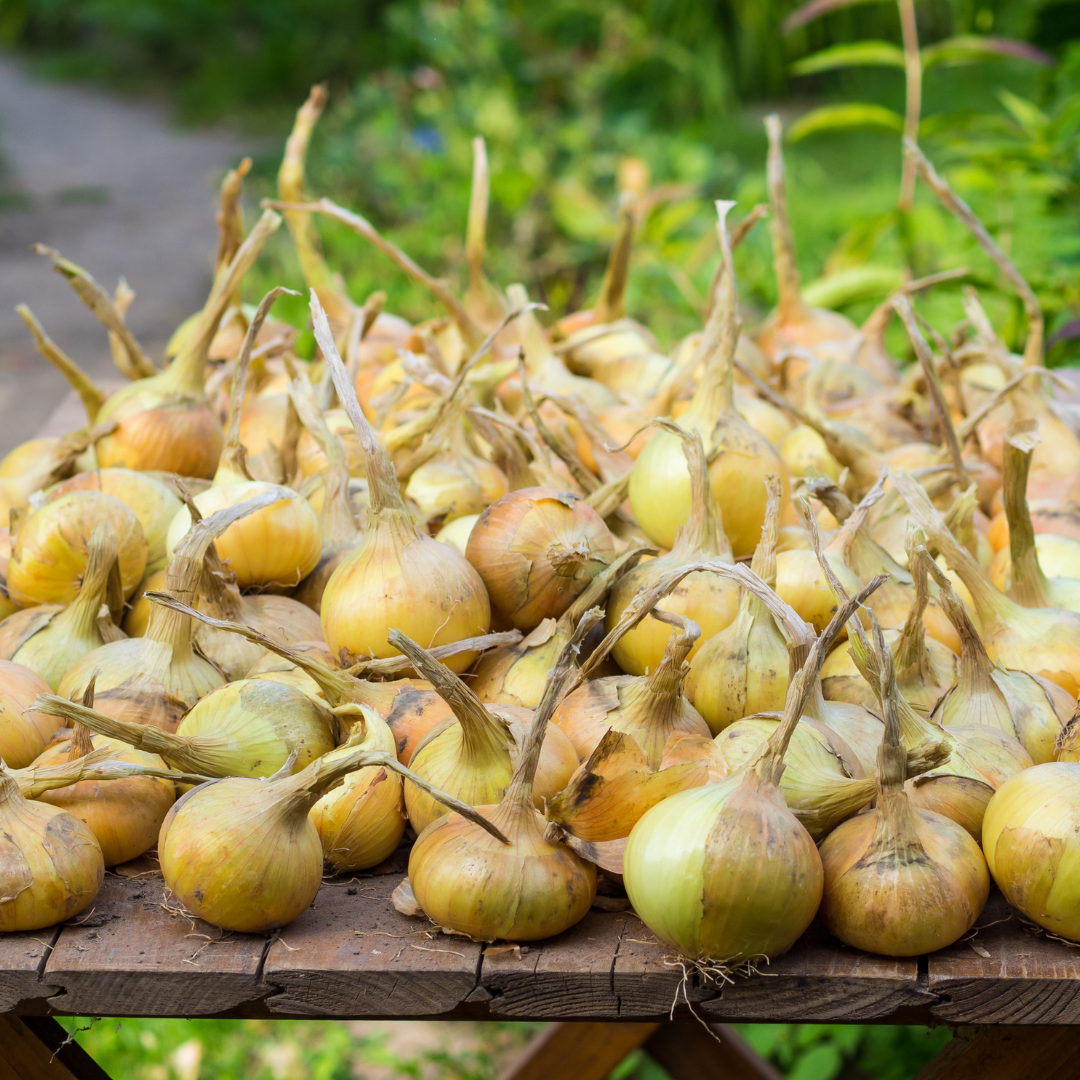
6. How to Store Onions
Once your onion plants have fallen onto the soil, pull the plants and lay them on top of the soil or on the grass in direct sunlight. This "curing" process allows the onions to properly dry for long-term storage.
Leave them in the sun for 3-4 days or until the tops and roots become dry and crispy. If you're expecting rain, go ahead and move the onions indoors. You don't want them to get wet.
Once "cured," store your onions in a cool dry area. Round onions will typically store longer than flat or granex-type onions, and white onions will typically store longer than yellow or red onions.
